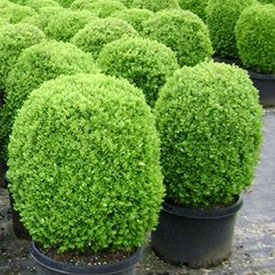I was recently reminded of a little touch that I’d always loved, but had almost forgotten. I was visiting family in a village in Northern Israel, when I saw a fairly common shrub limbed up to take the form of a small tree, not more than 2.5 meters high. The shrub was Pitanga, (Eugenia uniflora), and it looked absolutely fabulous. There are a number of reasons why I think some shrubs should be seen as candidates for this kind of treatment.
* From a compositional point of view, a vertical accent at this sought of height is often lacking in a private garden
* Many shrubs have edible fruits, of which Pitanga is one example. Natal plum (Carissa macrocarpa) is another. Now we all know the pest problem associated with many fruit trees, yet many of these bushes are virtually pest free.
* Growing a common shrub in an unusual manner will give your garden the feeling of being a bit special, without resorting to ostentatious measures like topiary.
* Shrubs that grow to say 4 meters can be used instead of trees. It should be noted that it’s very difficult to find a tree whose height limit is around 4 meters.
While virtually any shrub can be grown as a small tree it’s important to group them into two broad categories. Those that grow quickly, and those that grow slowly. Despite the obvious advantages of the former, I tend to prefer slow growing plants, because they’re easier to train and develop in the way you want. Many years ago for example, I planted the excellent Duranta repens for a customer, for the purpose of it turning into a small tree. While the customer tended the garden on a weekly basis, I came once every 3 months for the more “professional” tasks. And what happened? I couldn’t keep-up with the Duranta’s growth rate and basically “lost it”, as far as the mini tree idea was concerned. If you are highly proficient in the art of pruning, then “jet setters” may be fine for you. If not, play safe and stick with the “solid gentleman” type.
After making this basic distinction, you can then choose a species according to flower color or fruit preference. Many flowering shrubs look superb in this way, such as Hibiscus rosa-sinensis, Solanum rantonnetii, Cotoneaster and Pyracantha sp. Virburnum tinus, amongst others. I would also consider converting slow growing shrubs like Pittosporum tobira and Carissa macrocarpa, into small trees.
I think this idea is particularly suited to the dry climate gardener, where the naturally difficult conditions should encourage us to develop unusual ideas, hopefully not gimmicky ones, such as transforming ordinary plants into interesting garden features.
Article Source: http://EzineArticles.com/804997

